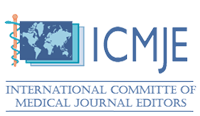ФИЗИЧЕСКИЕ ЭУСТРЕССОРЫ КАК ПОТЕНЦИАЛЬНЫЕ ИНСТРУМЕНТЫ ДЛЯ ПОВЫШЕНИЯ СТРЕССОУСТОЙЧИВОСТИ СЕЛЬСКОХОЗЯЙСТВЕННЫХ КУЛЬТУР (ОБЗОР)
Аннотация
Обоснование. Процессы, происходящие в растениях и их семенах при стрессовых воздействиях, а также защитные механизмы, используемые растениями при стрессе, мало изучены, что не позволяет использовать их для повышения урожайности.
Цель. Обзор и анализ научных публикаций, посвященных феномену приобретенной растениями в результате действия физического эустрессора на их семена «памяти» на стресс, и возможному применению этого явления в растениеводстве и селекции сельскохозяйственных культур.
Материалы и методы. Выполнен обзор научной литературы по теме исследования за период 2016-2023 гг. Выполнение исследования состояло из этапов: поиск научной литературы, ее оценка и отбор, синтез данных и их анализ.
Результаты. Использование горметических эффектов физических агентов для стимулирования прорастания семян сельскохозяйственных культур является эффективным. Реакция на абиотические стрессы может быть «натренирована» праймингом таким образом, что растение приобретает способность лучше переносить последующее воздействие стресса. Были найдены доказательства формирования краткосрочной и трансгенерационной памяти после прайминга растений. Установлен эпигенетический механизм формирования долгосрочной стрессовой памяти у растений в результате действия физического эустрессора. Эустрессор индуцирует специфические эпигенетические метки, связанные с адаптацией к окружающей среде, формируя новый стрессоустойчивый фенотип растения. Физические эустрессоры обладают потенциалом для придания сельскохозяйственным культурам устойчивости к стрессам путем усиления фенотипических характеристик, предотвращающих потери урожая.
Заключение. Обработка семян физическими эустрессорами формирует у растений устойчивость к абиотическим стрессам и память на них, но научные данные по этому вопросу являются неполными и отрывочными. На сегодняшний день понимание и применение стрессовой памяти в целях селекции ограничено, но она имеет большой потенциал для создания новых сортов сельскохозяйственных культур.
Скачивания
Литература
Araujo S.D.S., Paparella S., Dondi D., et al. Physical methods for seed invigoration: ad-vantages and challenges in seed technology. Frontiers in Plant Science, 2016, vol. 7, pp. 646. https://doi.org/10.3389/fpls.2016.00646
Asensi-Fabado M.A., Amtmann A., Perrella G. Plant responses to abiotic stress: the chromatin context of transcriptional regulation. Biochimica et Biophysica Acta (BBA) - Gene Regulatory Mechanisms, 2017, vol. 1860, no. 1, pp. 106-122. https://doi.org/10.1016/j.bbagrm.2016.07.015
Avramova Z. Defence-related priming and responses to recurring drought: two manifestations of plant transcriptional memory mediated by the ABA and JA signalling pathways. Plant, Cell & Environment, 2019, vol. 42, no. 3, pp. 983-997. https://doi.org/10.1111/pce.13458
Baby S.M., Narayanaswamy G.K., Anand A. Superoxide radical production and performance index of Photosystem II in leaves from magnetoprimed soybean seeds. Plant Signaling & Be-havior, 2011, vol. 6, no.11, pp. 1635-1637. https://doi.org/10.4161/psb.6.11.17720
Badridze G., Kacharava N., Chkhubianishvili E., Rapava L., Kikvidze M., Chanishvili S., Chigladze L. Effect of UV radiation and artificial acid rain on productivity of wheat. Russian Journal of Ecology, 2016, vol. 47, pp. 158-166. https://doi.org/10.1134/S106741361602003X
Baenas N., García-Viguera C., Moreno D.A. Elicitation: a tool for enriching the bioactive composition of foods. Molecules, 2014, vol. 19, no. 9, pp. 13541-13563. https://doi.org/10.3390/molecules190913541
Balmer A., Pastor V., Gamir J., Flors V., Mauch-Mani B. The ‘prime-ome’: towards a holistic approach to priming. Trends in Plant Science, 2015, vol. 20, no. 7, pp. 443-452. https://doi.org/10.1016/j.tplants.2015.04.002
Bera K., Dutta P., Sadhukhan S. Seed priming with non-ionizing physical agents: Plant re-sponses and underlying physiological mechanisms. Plant Cell Reports, 2022, vol. 41, no. 1, pp. 53-73. https://doi.org/10.1007/s00299-021-02798-y
Bilalis D.J., Katsenios N., Efthimiadou A., Karkanis A. Pulsed electromagnetic field: an or-ganic compatible method to promote plant growth and yield in two corn types. Electromag-netic Biology and Medicine, 2012, vol. 31, no. 4, pp. 333-343. https://doi.org/10.3109/15368378.2012.661699
Bhardwaj J., Anand A., Nagarajan S. Biochemical and biophysical changes associated with magnetopriming in germinating cucumber seeds. Plant Physiology and Biochemistry, 2012, vol. 57, pp. 67-73. https://doi.org/10.1016/j.plaphy.2012.05.008
Brzezinka K., Altmann S., Czesnick H., Nicolas P., Gorka M., Benke E., et al. Arabidopsis FORGETTER1 mediates stress-induced chromatin memory through nucleosome remodeling. eLife, 2016, vol. 5, pp. e17061. https://doi.org/10.7554/eLife.17061
Chang Y.N., Zhu C., Jiang J., Zhang H., Zhu J.K., Duan C.G. Epigenetic regulation in plant abiotic stress responses. Journal of Integrative Plant Biology, 2020, vol. 62, no. 5, pp. 563-580. https://doi.org/10.1111/jipb.12901
Cong W., Miao Y., Xu L. et al. Transgenerational memory of gene expression changes in-duced by heavy metal stress in rice (Oryza sativa L.). BMC Plant Biology, 2019, vol. 19, no. 1, pp. 1-14. https://doi.org/10.1186/s12870-019-1887-7
Conley A.B., Jordan I.K. Cell type-specific termination of transcription by transposable ele-ment sequences. Mobile DNA, 2012, vol. 3, pp. 1-13. https://doi.org/10.1186/1759-8753-3-15
Crisp P.A., Ganguly D., Eichten S.R., Borevitz J.O., Pogson B.J. Reconsidering plant memory: intersections between stress recovery, RNA turnover, and epigenetics. Science Ad-vances, 2016, vol. 2, no. 2, pp. e1501340. https://doi.org/10.1126/sciadv.1501340
De Gara L., de Pinto M.C., Moliterni V.M., D’Egidio M.G. Redox regulation and storage processes during maturation in kernels of Triticum durum. Journal of Experimental Botany, 2003, vol. 54, no. 381, pp. 249-258. https://doi.org/10.1093/jxb/erg021
Deleris A., Halter T., Navarro L. (2016) DNA methylation and demethylation in plant im-munity. Annual Review of Phytopathology, 2016, vol. 54, pp. 579-603. https://doi.org/10.1146/annurev-phyto-080615-100308
Erofeeva E.A. Environmental hormesis of non-specific and specific adaptive mechanisms in plants. Science of the Total Environment, 2022, vol. 804, pp. 150059. https://doi.org/10.1016/j.scitotenv.2021.150059
Faralli M., Lektemur C., Rosellini D., Gürel F. Effects of heat shock and salinity on barley growth and stress-related gene transcription. Biologia Plantarum, 2015, vol. 59, pp. 537-546. https://doi.org/10.1007/s10535-015-0518-x
Farooq M., Usman M., Nadeem F., ur Rehman H., Wahid A., Basra S.M., Siddique K.H. Seed priming in field crops: potential benefits, adoption and challenges. Crop and Pasture Science, 2019, vol. 70, no. 9, pp. 731-771. https://doi.org/10.1071/CP18604
Fortes A.M., Gallusci P. Plant stress responses and phenotypic plasticity in the epigenomics era: perspectives on the grapevine scenario, a model for perennial crop plants. Frontiers in Plant Science, 2017, vol. 8, pp. 82. https://doi.org/10.3389/fpls.2017.00082
Friedrich T., Faivre L., Baurle I., Schubert D. Chromatin-based mechanisms of temperature memory in plants. Plant, Cell & Environment, 2019, vol. 42, no. 3, pp. 762-770. https://doi.org/10.1111/pce.13373
Friedrich T., Oberkofler V., Trindade I., Altmann S., Brzezinka K., Lämke J., et al. Heter-omeric HSFA2/HSFA3 complexes drive transcriptional memory after heat stress in Arabidop-sis. Nature Communications, 2021, vol. 12, no. 1, pp. 3426. https://doi.org/10.1038/s41467-021-23786-6
Galviz Y.C., Ribeiro R.V., Souza G.M. Yes, plants do have memory. Theoretical and Exper-imental Plant Physiology, 2020, vol. 32, no. 3, pp. 195-202. https://doi.org/10.1007/s40626-020-00181-y
Garai S., Sopory S. K. Memory of plants: present understanding. The Nucleus, 2023, vol. 66, pp. 47-51. https://doi.org/10.1007/s13237-022-00399-y
Goldberg A.D., Allis C.D., Bernstein E. Epigenetics: a landscape takes shape. Cell, 2007, vol. 128, no. 4, pp. 635-638. https://doi.org/10.1016/j.cell.2007.02.006
Halliwell B. Reactive species and antioxidants. Redox biology is a fundamental theme of aer-obic life. Plant Physiology, 2006, vol. 141, no. 2, pp. 312-322. https://doi.org/10.1104/pp.106.077073
Hepworth J., Antoniou-Kourounioti R.L., Bloomer R.H., Selga C., Berggren K., Cox D., et al. Absence of warmth permits epigenetic memory of winter in Arabidopsis. Nature Communica-tions, 2018, vol. 9, no. 1, pp. 639. https://doi.org/10.1038/s41467-018-03065-7
Hideg E., Jansen M.A., Strid A. UV-B exposure, ROS, and stress: inseparable companions or loosely linked associates? Trends in Plant Science, 2013, vol. 18, no. 2, pp. 107-115. https://doi.org/10.1016/j.tplants.2012.09.003
Hossain M.A., Li Z.G., Hoque T.S., Burritt D.J., Fujita M., Munné-Bosch S. Heat or cold priming-induced cross-tolerance to abiotic stresses in plants: key regulators and possible mechanisms. Protoplasma, 2018, vol. 255, pp. 399-412. https://doi.org/10.1007/s00709-017-1150-8
Hussain S., Khan F., Cao W., Wu L., Geng M. Seed priming alters the production and detoxi-fication of reactive oxygen intermediates in rice seedlings grown under sub-optimal tempera-ture and nutrient supply. Frontiers in Plant Science, 2016, vol. 7, pp. 439. https://doi.org/10.3389/fpls.2016.00439
Kaciene G., Milce J.Z.E., Juknys R. Role of oxidative stress on growth responses of spring barley exposed to different environmental stressors. Journal of Plant Ecology, 2015, vol. 8, no. 6, pp. 605-616. https://doi.org/10.1093/jpe/rtv026
Kornarzyński K., Dziwulska-Hunek A., Kornarzyńska-Gregorowicz A., Sujak A. Effect of electromagnetic stimulation of amaranth seeds of different initial moisture on the germination parameters and photosynthetic pigments content. Scientific Reports, 2018, vol. 8, no. 1, pp. 14023. https://doi.org/10.1038/s41598-018-32305-5
Kranner I., Minibayeva F.V., Beckett R.P., Seal C.E. What is stress? Concepts, definitions and applications in seed science. New Phytologist, 2010, vol. 188, no. 3, pp. 655-673. https://doi.org/10.1111/j.1469-8137.2010.03461.x
Kushwaha A.K., Khan A., Sopory S.K., Sanan-Mishra N. Priming by high temperature stress induces microRNA regulated heat shock modules indicating their involvement in thermoprim-ing response in rice. Life, 2021, vol. 11, no. 4, pp. 291. https://doi.org/10.3390/life11040291
Lämke J., Bäurle I. Epigenetic and chromatin-based mechanisms in environmental stress ad-aptation and stress memory in plants. Genome Biology, 2017, vol. 18, pp. 124. https://doi.org/10.1186/s13059-017-1263-6
Li X., Cai J., Liu F., Dai T., Cao W., Jiang D. Physiological, proteomic and transcriptional responses of wheat to combination of drought or waterlogging with late spring low tempera-ture. Functional Plant Biology, 2014, vol. 41, no. 7, pp. 690-703. https://doi.org/10.1071/FP13306
Li Z-G., Xu Y., Bai L-K., Zhang S-Y., Wang Y. Melatonin enhances thermotolerance of maize seedlings (Zea mays L.) by modulating antioxidant defense, methylglyoxal detoxifica-tion, and osmoregulation systems. Protoplasma, 2019, vol. 256, pp. 471-490. https://doi.org/10.1007/s00709-018-1311-4
Liang C., Zheng G., Li W., Wang Y., Hu B., Wang H., et al. Melatonin delays leaf senescence and enhances salt stress tolerance in rice. Journal of Pineal Research, 2015, vol. 59, no. 1, pp. 91-101. https://doi.org/10.1111/jpi.12243
Lichtenthaler H.K. Vegetation stress: an introduction to the stress concept in plants. Journal of Plant Physiology, 1996, vol. 148, no. 1-2, pp. 4-14. https://doi.org/10.1016/S0176-1617(96)80287-2
Ling Y., Serrano N., Gao G., Atia M., Mokhtar M., et al. Thermopriming triggers splicing memory in Arabidopsis. Journal of Experimental Botany, 2018, vol. 69, no. 10, pp. 2659-2675. https://doi.org/10.1093/jxb/ery062
Liu H., Able A.J., Able J.A. Priming crops for the future: Rewiring stress memory. Trends in Plant Science, 2022, vol. 27, no. 7, pp. 699-716. https://doi.org/10.1016/j.tplants.2021.11.015
Liu X., Quan W., Bartels D. Stress memory responses and seed priming correlate with drought tolerance in plants: An overview. Planta, 2022, vol. 255, no. 2, pp. 45. https://doi.org/10.1007/s00425-022-03828-z
Locato V., Cimini S., De Gara L. ROS and redox balance as multifaceted players of cross-tolerance: epigenetic and retrograde control of gene expression. Journal of Experimental Botany, 2018, vol. 69, no. 14, pp. 3373-3391. https://doi.org/10.1093/jxb/ery168
Lukić N., Kukavica B., Davidović-Plavšić B., Hasanagić D., Walter J. Plant stress memory is linked to high levels of anti-oxidative enzymes over several weeks. Environmental and Exper-imental Botany, 2020, vol. 178, pp. 104166. https://doi.org/10.1016/j.envexpbot.2020.104166
Luna E., Bruce T.J.A., Roberts M.R. et al. Next-generation systemic acquired resistance. Plant Physiology, 2012, vol. 158, no. 2, pp. 844-853. https://doi.org/10.1104/pp.111.187468
Michmizos D., Hilioti Z. A roadmap towards a functional paradigm for learning & memory in plants. Journal of Plant Physiology, 2019, vol. 232, pp. 209-215. https://doi.org/10.1016/j.jplph.2018.11.002
Magno Massuia de Almeida L., Avice J.C., Morvan-Bertrand A., et al. High temperature pat-terns at the onset of seed maturation determine seed yield and quality in oilseed rape (Brassi-ca napus L.) in relation to sulphur nutrition. Environmental and Experimental Botany, 2021, vol. 185, pp. 104400. https://doi.org/10.1016/j.envexpbot.2021.104400
Noble L., Dhankher O.P., Puthur J.T. Seed priming can enhance and retain stress tolerance in ensuing generations by inducing epigenetic changes and trans‐generational memory. Physio-logia Plantarum, 2023, vol. 175, no. 2, pp. e13881. https://doi.org/10.1111/ppl.13881
Okoli C. A guide to conducting a standalone systematic literature review. Communications of the Association for Information Systems, 2015, vol. 37, pp. 879-910. https://doi.org/10.17705/1cais.03743
Paparella S., Araújo S.S., Rossi G., Wijayasinghe M., Carbonera D., Balestrazzi A. Seed priming: state of the art and new perspectives. Plant Cell Reports, 2015, vol. 34, pp. 1281-1293. https://doi.org/10.1007/s00299-015-1784-y
Parejo-Farnés C., Aparicio A., Albaladejo R.G. An approach to the ecological epigenetics in plants. Ecosistemas, 2019, vol. 28, no. 1, pp. 69-74. https://doi.org/10.7818/ECOS.1605
Pastor V., Luna E., Mauch-Mani B. et al. Primed plants do not forget. Environmental and Ex-perimental Botany, 2013, vol. 94, pp. 46-56. https://doi.org/10.1016/j.envexpbot.2012.02.013
Perrone A., Martinelli F. Plant stress biology in epigenomic era. Plant Science, 2020, vol. 294, pp. 110376. https://doi.org/10.1016/j.plantsci.2019.110376
Racette K., Rowland D., Tillman B. et al. Transgenerational stress memory in seed and seed-ling vigor of peanut (Arachis hypogaea L.) varies by genotype. Environmental and Experi-mental Botany, 2019, vol. 162, pp. 541-549. https://doi.org/10.1016/j.envexpbot.2019.03.006
Radhakrishnan R. (2019) Magnetic field regulates plant functions, growth and enhances toler-ance against environmental stresses. Physiology and Molecular Biology of Plants, vol. 25, no. 5, pp. 1107-1119. https://doi.org/10.1007/s12298-019-00699-9
Ramírez-Carrasco G., Martínez-Aguilar K., Alvarez-Venegas R. Transgenerational defense priming for crop protection against plant pathogens: a hypothesis. Frontiers in Plant Science, 2017, vol. 8, pp. 696. https://doi.org/10.3389/fpls.2017.00696
Reza Rahavi S.M., Kovalchuk I. (2013) Transgenerational changes in Arabidopsis thaliana in response to UV-C, heat and cold. Biocatalysis and Agricultural Biotechnology, 2013, vol. 2, no. 3, pp. 226-233. https://doi.org/10.1016/j.bcab.2013.05.001
Romero-Galindo R., Hernández-Aguilar C., Dominguez-Pacheco A., Godina-Nava J.J., Tsonchev R.I. Biophysical methods used to generate tolerance to drought stress in seeds and plants: a review. International Agrophysics, 2022, vol. 35, no. 4, pp. 389-410. https://doi.org/10.31545/intagr/144951
Savvides A., Ali S., Tester M., Fotopoulos V. Chemical priming of plants against multiple abiotic stresses: mission possible? Trends in Plant Science, 2016, vol. 21, no. 4, pp. 329-340. https://doi.org/10.1016/j.tplants.2015.11.003
Slaughter A., Daniel X., Flors V. et al. Descendants of primed arabidopsis plants exhibit re-sistance to biotic stress. Plant Physiology, 2012, vol. 158, no. 2, pp. 835-843. https://doi.org/10.1104/pp.111.191593
Srivastava A.K., Suresh Kumar J., Suprasanna P. Seed ‘primeomics’: plants memorize their germination under stress. Biological Reviews, 2021, vol. 96, no. 5, pp. 1723-1743. https://doi.org/10.1111/brv.12722
Teklić T., Parađiković N., Špoljarević M. et al. (2021) Linking abiotic stress, plant metabolites, biostimulants and functional food. Annals of Applied Biology, vol. 178, no. 2, pp. 169-191. https://doi.org/10.1111/aab.12651
Tirnaz S., Batley J. Epigenetics: potentials and challenges in crop breeding. Molecular Plant, 2019, vol. 12, no. 10, pp. 1309-1311. https://doi.org/10.1016/j.molp.2019.09.006
Thellier M., Lüttge U., Norris V., Ripoll C. Plant accommodation to their environment: the role of specific forms of memory. In: Memory and Learning in Plants. Springer, Cham. 2018, pp. 131-137. https://doi.org/10.1007/978-3-319-75596-0_7
Thomas T.D., Dinakar C., Puthur J.T. Effect of UV-B priming on the abiotic stress tolerance of stress-sensitive rice seedlings: Priming imprints and cross-tolerance. Plant Physiology and Biochemistry, 2020, vol. 147, pp. 21-30. https://doi.org/10.1016/j.plaphy.2019.12.002
Torraco R.J. Writing integrative literature reviews: Using the past and present to explore the future. Human Resource Development Review, 2016, vol. 15, no. 4, pp. 404-428. https://doi.org/10.1177/1534484316671606
Tricker P.J. Transgenerational inheritance or resetting of stress-induced epigenetic modifica-tions: two sides of the same coin. Frontiers in Plant Science, 2015, vol. 6, pp. 699. https://doi.org/10.3389/fpls.2015.00699
Vashisth A., Nagarajan S. Effect on germination and early growth characteristics in sunflower (Helianthus annuus) seeds exposed to static magnetic field. Journal of Plant Physiology, 2010, vol. 167, no. 2, pp. 149-156. https://doi.org/10.1016/j.jplph.2009.08.011
Vázquez-Hernández M.C., Parola-Contreras I., Montoya-Gómez L.M., Torres-Pacheco I., Schwarz D., Guevara-González R.G. Eustressors: Chemical and physical stress factors used to enhance vegetables production. Scientia Horticulturae, 2019, vol. 250, pp. 223-229. https://doi.org/10.1016/j.scienta.2019.02.053
Vian A., Roux D., Girard S., et al. Microwave irradiation affects gene expression in plants. Plant Signaling & Behavior, 2006, vol. 1, no. 2, pp. 67-70. https://doi.org/10.4161/psb.1.2.2434
Villagómez-Aranda A.L., Feregrino-Pérez A.A., García-Ortega L.F., González-Chavira M.M., Torres-Pacheco I., Guevara-González R.G. Activating stress memory: Eustressors as potential tools for plant breeding. Plant Cell Reports, 2022, vol. 41, no. 7, pp. 1481-1498. https://doi.org/10.1007/s00299-022-02858-x
Volkova P.Y., Bondarenko E.V., Kazakova E.A. Radiation hormesis in plants. Current Opin-ion in Toxicology, 2022, vol. 30, pp. 100334. https://doi.org/10.1016/j.cotox.2022.02.007
Wang X., Mao Z., Zhang J., Hemat M., Huang M., Cai J., et al. Osmolyte accumulation plays important roles in the drought priming induced tolerance to post-anthesis drought stress in winter wheat (Triticum aestivum L.). Environmental and Experimental Botany, 2019, vol. 166, pp. 103804. https://doi.org/10.1016/j.envexpbot.2019.103804
Wei W., Li Q-T., Chu Y-N., Reiter R.J., et al. Melatonin enhances plant growth and abiotic stress tolerance in soybean plants. Journal of Experimental Botany, 2015, vol. 66, no. 3, pp. 695-707. https://doi.org/10.1093/jxb/eru392
Weinhold A. Transgenerational stress-adaption: an opportunity for ecological epigenetics. Plant Cell Reports, 2018, vol. 37, pp. 3-9. https://doi.org/10.1007/s00299-017-2216-y
Wibowo A., Becker C., Marconi G., Durr J., Price J., Hagmann J., et al. Hyperosmotic stress memory in Arabidopsis is mediated by distinct epigenetically labile sites in the genome and is restricted in the male germline by DNA glycosylase activity. eLife, 2016, vol. 5, pp. e13546. https://doi.org/10.7554/eLife.13546
Просмотров аннотации: 172 Загрузок PDF: 139
Copyright (c) 2023 Oleg N. Bakhchevnikov, Sergey V. Braginets, Nina S. Kravchenko, Viktor I. Pakhomov

Это произведение доступно по лицензии Creative Commons «Attribution-NonCommercial-NoDerivatives» («Атрибуция — Некоммерческое использование — Без производных произведений») 4.0 Всемирная.






















































